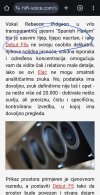I have run hundreds of sine wave sweeps and I reckon that my ears can give me an idea what the curve is going to look like, even before I look at the graph generated by REW with my microphone. Of course you are better off with a mic / sound card / REW software but the cost of a simple inexpensive measurement setup will be more than any of those speakers you mentioned. If you are not willing or able to invest in these, I would suggest running a few sine wave sweeps and listening.
Another free alternative would be to download an SPL meter app for your phone and conduct your own manual sine wave sweep. This is how you do it:
- Mount your phone at a standard distance to the speaker, say 50-100cm.
- Run some white noise. Take note of the volume (say 80dB). Do not run too loud to avoid the risk of clipping. This will be your reference volume which is what you will use to normalize the volume of all the other speakers.
- Take measurements at different freqs in a logarithmic fashion, depending on how much effort and time you are willing to invest. Examples, 50, 60, 80, 100, 140, 180, 220, 260, 320 ... 1000, 2000, 4000, 8000 ..., etc. Draw the result on graph paper.
- Replace the speaker and adjust the volume with white noise until it reaches 80dB to match the first speaker. Repeat.
Of course, this approach is rife with inaccuracies and most notably it is not absolute, in that the response curve of the mic in your phone (which is likely all over the place) + repeatability of placement, etc. will interfere with the results. However, it does allow you compare one speaker against another in your own home for free.
In any case, if you buy a switch to compare the speakers (as a few others have suggested above) you STILL need to normalize the volume with white noise and an SPL meter at a standard distance to be able to compare the speakers fairly, otherwise the loudest speaker will sound better. However there is nothing wrong with just listening to the speaker and form a subjective impression of it, if you enjoy it that's good enough. You are only spending less than $200 for your speaker, it is not as if it's an expensive investment, and it will not be doing anything mission critical.
